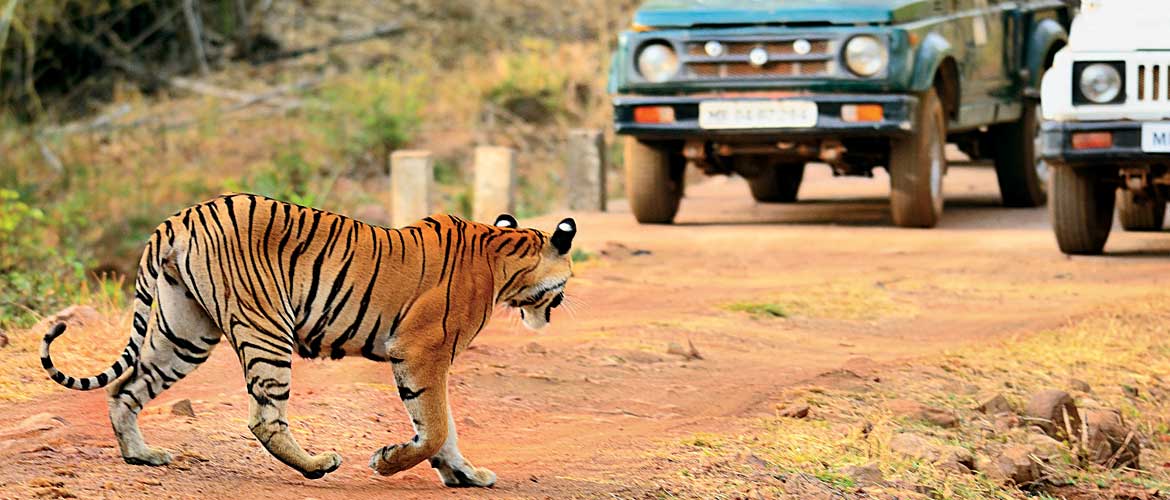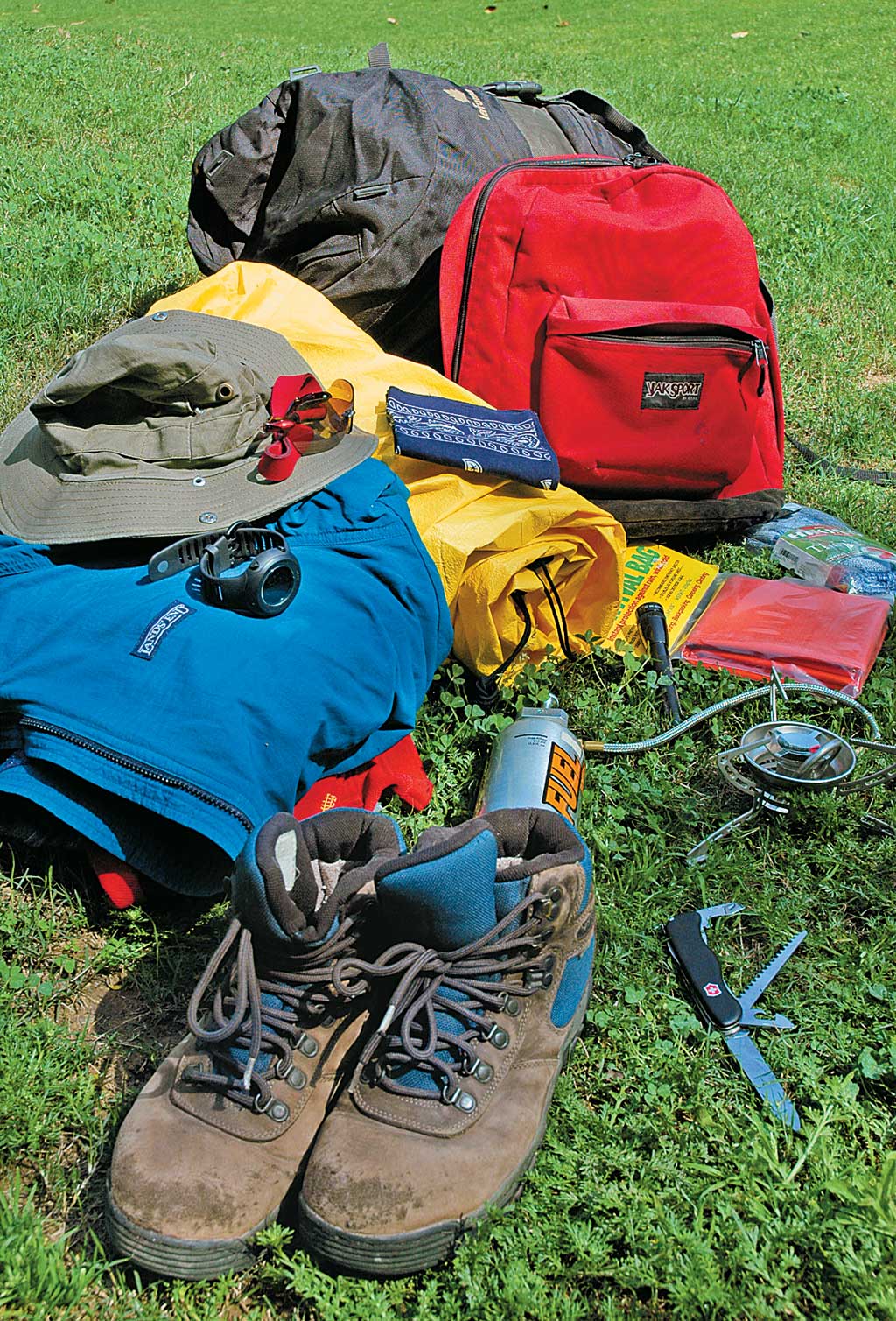Serves them right’, I thought to myself, a few years ago, as a huge male
I was on my way back to the forest rest house after an incredible day’s birding (46 species in two hours!), when I had got caught behind this unfortunate traffic jam. I was wondering if the noisy tourists were even remotely aware of the wonders they were missing out on as they hurtled helter-skelter in their single-minded search “to see the tiger”.
For a few years, after this trip, Sariska was reportedly wiped out to the last cat by an international wildlife trade that took advantage of the avarice of locals and the apathy of Sariska’s demoralised forest staff. Without tigers, predictably, tourism had taken a knock in Sariska, with lodges running empty and vehicle owners moving on to greener pastures. However, in 2014, tigers were reintroduced in the reserve, taking the numbers of the big cat to 13. The attraction of the tiger aside, the rugged terrain, well-watered valleys and thick forest patches remain an incredible birdwatching paradise, with numerous raptors, ground birds and, in winter, an array of migratory water fowl on display. If Sariska had not been a well-known tiger destination, it would probably have got the recognition of being India’s finest birding spots.
I have camped, hiked, cycled, rafted, scuba-dived, driven and wildlife watched my way through the length and breadth of this diverse and breathtaking nation. And in my meanderings I have learned from our people that wild nature was always the fount of our civilisation. Not so much for its ability to provide sustenance, but because of our god-like respect for all things natural. Our people still believe, for instance, that forests are the ‘mothers of rivers’: “Jungle nadi ki ma he,” they say with conviction. Which is why, at every source of every river in India (including Sariska), small temples, often just a rough assembly of rocks, can still be discovered. Such hallowed places were once inviolate and peaceful. Birds, animals and plants were allowed to rule supreme, in exchange for that invaluable gift of nature – water.
- The Bare Necessities
Just the Bare Necessities
Travelling in the wilderness requires a special sensitivity. The laws of the jungle are different but there are several ways to get the best out of your travel without disturbing the habitats you visit. Bring back only beautiful memories. Some tips that you can use:
■ Dress in muted forest colours such as greens, browns, beige and dull browns. Avoid orange, red, pink and bright prints
■ Since fire hazard is a serious problem, please do not smoke and carefully put out every last timber in your campfire before leaving.
■ Wear comfortable walking shoes and don’t forget a hat! High boots with socks are a sensible option for jungle walks. Always check your shoes before you wear them for creepy crawlies like scorpions that love dark places.
■ Go easy on the perfume, deodorant, aftershave and smelly ointments. Such fragrances attract biting insects that are in plenty.
■ Try not to talk too much or make loud sounds while journeying into the jungle. Do not carry speakers, whistles, etc.
■ Do not litter the park, instead carry the garbage to your base camp or better still carry it back to dispose off in the city.
■ While staying inside the forest conform to the ‘no bright lights’ rule. Do carry a torch though, with extra batteries.
■ Do not get too close to the animals and do not ever attempt to feed them!
■ Consuming alcohol and carrying arms and ammunition within a sanctuary is strictly prohibited.
■ Check whether swimming and fishing are permitted in the lakes and follow the law.
■ Do not take pets to wildlife sanctuaries.
■ Night drives are not permitted inside parks without prior permission.
■ Ensure your camera is well-protected to withstand bumps, moisture and dust during park rides.
■ Carry your own toiletries.
■ A survival kit together with camping equipment such as tents, pots and pans, ropes, hooks, sleeping bags, salt for leeches and Swiss army knives can come handy in regions where camping inside jungles is allowed.
■ It’s useful to carry a first-aid kit with basic quick fix solutions and medicines for any emergency.
■ Binoculars and a bird book will enhance your birding experience.
■ Dress according to season.
■ Chocolate bars, toffees and locally procured fruits are good energy foods. Pack some.
■ While on tour of the wild, carry your own supply of drinking water.
■ Carry a map of the jungle with you. It is quite useful to know in which direction of the park you are travelling in.

Consider the magnificent India we inherited. Bounded towards the north by the great Himalaya , which protects us from freezing winds; cocooned by a warm tropical climate, a gift of living seas, blanketed with fertile soils that nurture all varieties of seeds; and watered by one of the most extravagant river systems.
Thanks to innumerable experts including planter and wildlifer EP Gee, the first Director of Project Tiger, Kailash Sankhala, the famed birdman of India Dr Salim Ali, elephant expert and writer M Krishnan, and ornithologist and writer KS Dharmakumarsinhji – who toiled hard to protect Gir’s lions and also an extensive network of sanctuaries and national parks that have kept protected a bewildering variety of plants and animals across this country, for years.
It is largely to such destinations that most tourists from India and overseas flock. The prime purpose of these delicate areas, however, is not to entertain us, but to hold forever the precious biodiversity, which evolved on the earth over the aeons. And while elephants, leopards, rhinos and tigers benefit from such protection, all who step into wilderness must be aware they are visiting the sources of India’s water security. Without these pristine wildlife havens, life in India would become unliveable – even for humans residing in cities.
Each reserve has its own unique charisma and its geographical characteristics determine the best way to view it. Most often, real appreciation of nature can only emerge when a tourist spends a few days at the site to allow the city to seep out of his system, while the wilderness seeps in!
Taking time out to be in such environs does two things to us right away: first, it offers respite from the noise and clutter of urban existence, without which most of us cannot experience the solitude so vital to finding peace within ourselves. Second, it injects one with humility and reminds us that this world was a very, very orderly place once. This realisation is crucial in our battle to protect the earth and its natural riches from those who believe that man and his factories can improve on all that had come before.
While tourism can and should play a positive role in ensuring the long-term survival of our wilds, we should also not forget tourism’s potential dark side. Most often the adverse effects of tourism emerge where commerce replaces education as the prime motivating factor. Luxury tourism is just as prone to abuse, as is mass tourism with its quick-fix operators searching to squeeze money by cramming too many visitors into the fragile wilderness. When the well-heeled seek adventure, they visit remote areas to be one with nature but tend to demand the creature comforts of urbania in the middle of nowhere. This then causes problems of waste disposal, fuel-wood consumption and also social tensions when villagers, prevented from accessing forest wealth themselves, see wealthy outsiders enter freely as latter day maharajas. This has been a particularly vexing factor around areas where even government servants are treated as royalty by park authorities, who are otherwise routinely ruthless in their treatment of locals.
There is no way out but to constantly remind ourselves that the issue of biodiversity is not restricted to establishing parks or protecting a particular species. No doubt elephants and tigers will benefit from enhanced protection, but as we have seen, such areas also supply humans , particularly India’s 60 million tribal people, with uncounted goods and services, such as water, fuel, fodder, fibre and food.
City dwellers, like you and me are also dependent on these reserves for water. Not to speak of the overall ecological health of the environment in which we breathe and live daily.
While I have often taken issue with tour operators who ‘mine’ and thus ruin destinations, I also work closely with those who share our vision of responsible tourism, which is best encapsulated by that amazing piece of advice given by someone whose name is lost in the mists of history: “You are a guest of nature… behave!”
OT Getaway Guides
Wildlife Holidays in India







